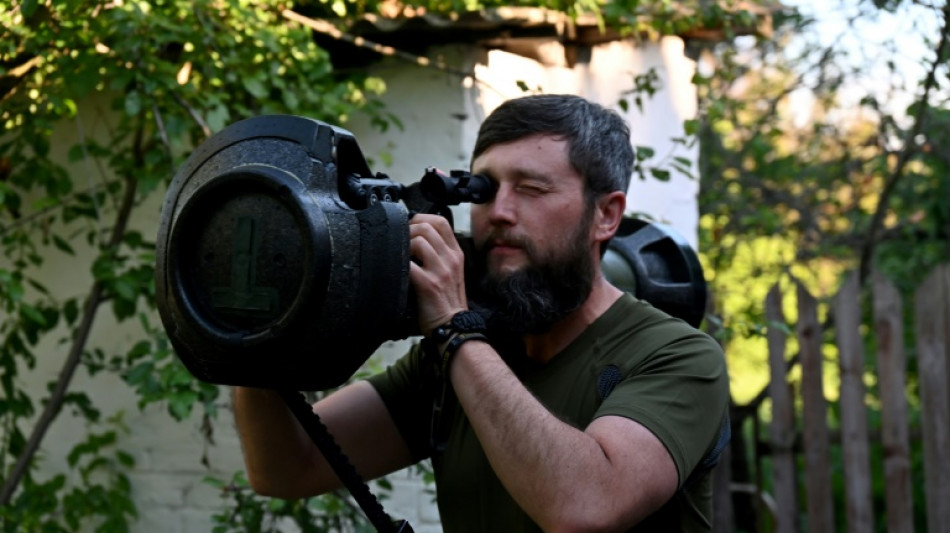
-
 Bangladesh Islamists rally in show of force
Bangladesh Islamists rally in show of force
-
Zelensky says won't play Putin's 'games' with short truce
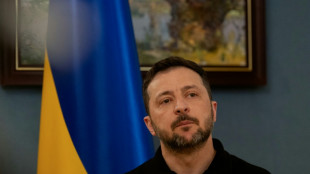
-
 Cardinals meet ahead of papal election
Cardinals meet ahead of papal election
-
Pakistan tests missile weapons system amid India standoff
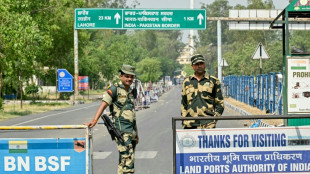
-
 France charges 21 prison attack suspects
France charges 21 prison attack suspects
-
Pakistan military says conducts training launch of missile
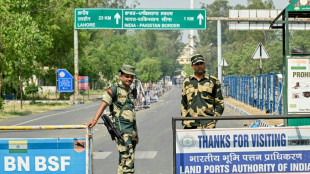
-
 Lives on hold in India's border villages with Pakistan
Lives on hold in India's border villages with Pakistan
-
Musk's dreams for Starbase city in Texas hang on vote
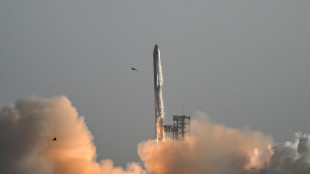
-
 Rockets down Warriors to stay alive in NBA playoffs
Rockets down Warriors to stay alive in NBA playoffs
-
Garcia beaten by Romero in return from doping ban

-
 Inflation, hotel prices curtail Japanese 'Golden Week' travels
Inflation, hotel prices curtail Japanese 'Golden Week' travels
-
Trump's next 100 days: Now comes the hard part

-
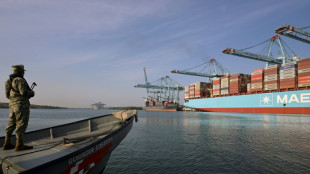 Mexican mega-port confronts Trump's tariff storm
Mexican mega-port confronts Trump's tariff storm
-
Trump's tariffs bite at quiet US ports

-
 Ryu stretches lead at LPGA Black Desert Championship
Ryu stretches lead at LPGA Black Desert Championship
-
Singapore votes with new PM seeking strong mandate amid tariff turmoil

-
 Five things to know about the Australian election
Five things to know about the Australian election
-
Scheffler fires 63 despite long delay to lead CJ Cup Byron Nelson

-
 GISEC Global 2025: Dubai Mobilises Global Cyber Defence Leaders to Combat AI-Driven Cybercrime and Ransomware
GISEC Global 2025: Dubai Mobilises Global Cyber Defence Leaders to Combat AI-Driven Cybercrime and Ransomware
-
Israel launches new Syria strikes amid Druze tensions

-
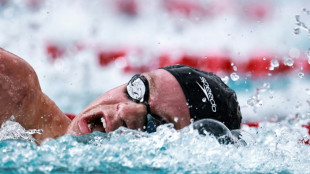 Finke grabs 400m medley victory over world record-holder Marchand
Finke grabs 400m medley victory over world record-holder Marchand
-
Apple eases App Store rules under court pressure

-
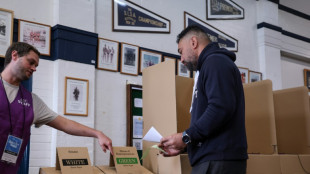 Polls open in Australian vote swayed by inflation, Trump
Polls open in Australian vote swayed by inflation, Trump
-
Russell clocks second fastest 100m hurdles in history at Miami meeting

-
 Germany move against far-right AfD sets off US quarrel
Germany move against far-right AfD sets off US quarrel
-
Billionaire-owned Paris FC win promotion and prepare to take on PSG

-
 Teenager Antonelli grabs pole for Miami sprint race
Teenager Antonelli grabs pole for Miami sprint race
-
Man City climb to third as De Bruyne sinks Wolves

-
 Mercedes' Wolff backs Hamilton to come good with Ferrari
Mercedes' Wolff backs Hamilton to come good with Ferrari
-
'Devastated' Prince Harry says no UK return but seeks reconciliation

-
 Elway agent death likely accidental: report
Elway agent death likely accidental: report
-
Turkish Cypriots protest new rule allowing hijab in school

-
 Germany's AfD dealt blow with right-wing extremist label
Germany's AfD dealt blow with right-wing extremist label
-
Trump NASA budget prioritizes Moon, Mars missions over research

-
 Hard-right romps through UK polls slapping aside main parties
Hard-right romps through UK polls slapping aside main parties
-
Rangers hire two-time NHL champion Sullivan as coach

-
 Haaland on bench for Man City as striker returns ahead of schedule
Haaland on bench for Man City as striker returns ahead of schedule
-
US designates two Haitian gangs as terror groups

-
 Lower profits at US oil giants amid fall in crude prices
Lower profits at US oil giants amid fall in crude prices
-
NBA icon Popovich stepping down as Spurs coach after 29 seasons

-
 'Devastated' Prince Harry says no return to UK but seeks royal reconciliation
'Devastated' Prince Harry says no return to UK but seeks royal reconciliation
-
Grande scratched from Kentucky Derby

-
 Carney vows to transform Canada economy to withstand Trump
Carney vows to transform Canada economy to withstand Trump
-
Prince Harry says he would 'love' to reconcile with family

-
 Major offshore quake causes tsunami scare in Chile, Argentina
Major offshore quake causes tsunami scare in Chile, Argentina
-
GM cuts shift at Canada plant over 'evolving trade environment'

-
 F1 extends deal to keep Miami GP until 2041
F1 extends deal to keep Miami GP until 2041
-
Popovich mixed toughness and spirit to make NBA history

-
 US asks judge to break up Google's ad tech business
US asks judge to break up Google's ad tech business
-
Trump eyes huge 'woke' cuts in budget blueprint
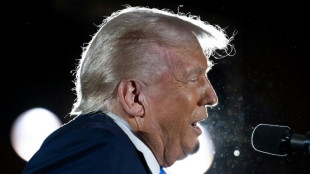

Ukraine dependent on arms from allies after exhausting Soviet-era weaponry
Ukraine has depleted its Soviet and Russian-designed weaponry and is now completely dependent on allies for arms to defend against Russia's invasion, US military sources say.
Once part of the Soviet Union, Ukraine's army and its defense industry were built around Soviet and Russian-standard equipment, small arms, tanks, howitzers and other weapons not interchangeable with those of neighbors to the west.
More than three months into the conflict sparked when Russia invaded Ukraine on February 24, that equipment has been used up or destroyed in battle, the US sources said.
Now, Kyiv's forces are using, or learning to use, arms wielded by the United States and European NATO allies.
- Steady flow -
Early in the war, the West was cautious about supplying much to Kyiv, worried that doing so risked bringing about a NATO v. Russia conflict.
They also feared their advanced weapons technology would fall into Russia's hands.
Instead, Ukraine's allies offered up their own stockpiles of Russian-standard equipment, including tanks and helicopters, to bolster Kyiv's troops.
The United States also led an effort to comb through other ex-Soviet countries for ammunition, parts and additional supplies that would match Ukraine's needs.
But that all has now been used up or destroyed.
"They are gone from the world," a US official said of the Soviet and Russian-standard arms.
That means Ukrainian forces are having to switch to often unfamiliar arms built to Western specifications.
Shedding former worries over the conflict expanding or Russia obtaining sensitive technology, the United States and NATO partners are sending Ukraine heavy armament, such as howitzers and Himars rocket artillery -- the latter offering greater range and precision than what the Russians have.
Under the umbrella of the 40-member Contact Group for Ukraine, allied defense chiefs are coordinating their assistance so that Kyiv's forces receive a continuous stream of ammunition, spare parts and weaponry, said another US military official.
But officials emphasized that if the arms appear to be arriving slowly, it is mainly because the allies want to be sure Ukraine's forces can absorb them steadily and safely.
The pace also limits the risk of stockpiled weaponry being destroyed by shelling inside Ukraine.
The United States is therefore sending its arms in stages.
The latest $700 million package announced on June 1 includes four Himars artillery systems, 1,000 Javelin anti-tank missiles and four Soviet-standard Mi-17 helicopters.
It also includes 15,000 howitzer shells, 15 light armored vehicles and other ammunition.
"We try to keep a steady flow," the second US official said.
- Push for longer-range arms -
Kyiv has asked repeatedly for the longer-range Himars precision missile systems, but Washington only agreed when it felt Ukraine was ready.
Joint Chiefs Chairman General Mark Milley said Wednesday that while four of the Himars systems were being prepared for Ukraine, training was focused on building one platoon at a time to operate them, a process of several weeks that could slow their delivery.
Himars is a "very sophisticated long-range system," Milley told reporters. "We have to certify these guys to make sure that they know how to use the system properly."
"If they use it properly, effectively, they'll have a very, very good effect on the battlefield," Milley said.
But, according to a US official, the United States is not willing to send Ukraine its Grey Eagle tactical drones out of fear they could be used to strike deep inside Russia, a move that could risk pulling Washington into direct conflict with Moscow.
L.Davis--AMWN